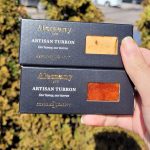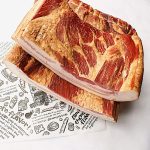Balsamic Vinegar in Six Paragraphs

A traditional curative comes to the table
Fifty years ago, the balsamic vinegar industry didn’t exist. That’s not to say that balsamic vinegar didn’t exist. For centuries it’s been made in the attics of most every family’s home in Modena, Italy. It’s just that no one outside of Modena knew about it. That’s not because it was a secret; it’s more like how if you came to my house I wouldn’t make a big point of telling you that I have aspirin in my medicine cupboard.
And in fact, that’s kind of how balsamic was traditionally used. If you had a headache or an upset stomach, grandma would prescribe a spoonful of balsamic. (If my grandma had suggested tonics that taste like balsamic, I probably would have “suffered” a lot more tummyaches as a kid.) Given how precious it was for its medicinal benefits, cooking with balsamic was seen as throwing it away.
On the rare occasions when balsamic was used for cooking, it was a sign of extreme opulence. The greatest way to impress your guests at dinner was to serve them balsamic. The host would bring the balsamic to the table and make a big show of drizzling it over rich dishes: roasted meats, or risottos, or stuffed pasta. It would never be wasted on a salad; salad was poor food.
By the 1960s, the word about balsamic started to get out, and folks started to come to Modena looking for it. But as demand grew, the supply didn’t. Traditional balsamic is still made the way it always was: aged for a dozen or more years in small wooden barrels kept at ambient temperature. That makes for a small amount of what can be an exceptional product, and prices are accordingly high.
Around the same time, some producers started looking for ways to offer a more affordable balsamic. While traditional balsamic is made only from cooked grape juice (called “must”), these producers started adding wine vinegar to the mix to cut costs. They also shortened the aging times, sometimes to just a couple of months. The result is a balsamic that can be made in much bigger quantities and sold at a much lower price, but that may not have all of the exceptional qualities of the traditional stuff. Shortly after balsamic became an international luxury, it also became the everyman’s vinegar.
When choosing a moderately priced balsamic, look for one that has grape must as the first ingredient, and avoid ones that have colorings like caramel added—the coloring is used to hide the fact that a lot of wine vinegar was added to the mix. In general, a younger balsamic will be brighter and more acidic in flavor, while an older balsamic will have a sweeter, more complex flavor and a more syrupy consistency. Younger ones are ideal for vinaigrettes; an older one is at its best drizzled over flavorful foods like strawberries, Parmigiano-Reggiano cheese, or good cured ham.





Zingerman’s Art for Sale